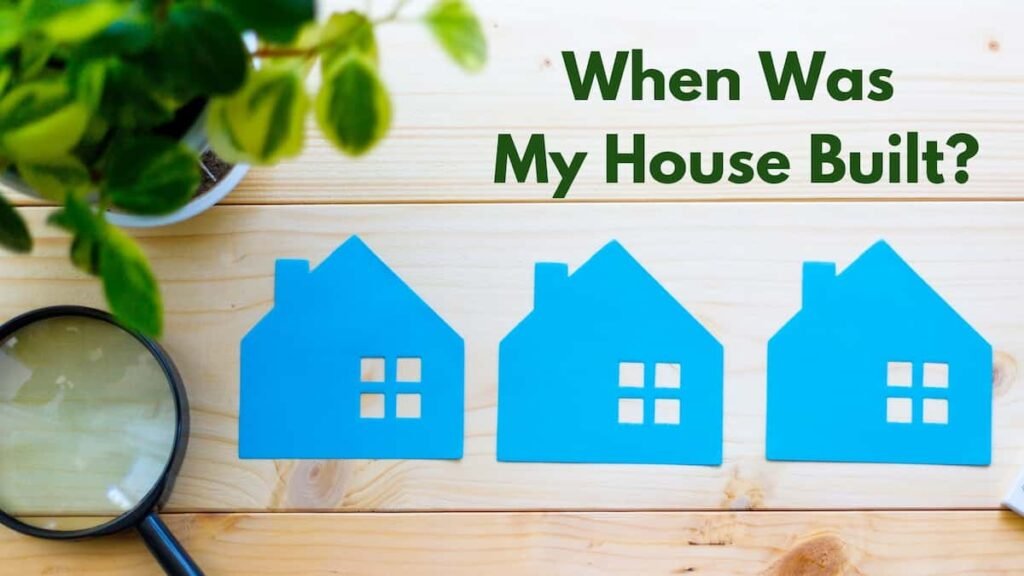
Every home holds a story, and a common curiosity among homeowners and buyers alike is uncovering when that story began. Discovering the year your house was built can reveal architectural significance, provide insight into its construction quality, and help you understand how it has evolved over time. Whether you’re planning renovations or just want to know more about your property’s past, learning how to find the age and history of a house can offer valuable information.
Why It’s Important to Know When Your Home Was Built
The construction date of a property isn’t just a historical detail—it can influence many practical aspects of homeownership. Older homes may require different types of maintenance, insurance policies, or inspections than newer ones. Knowing the age of your home helps you assess the condition of major systems like plumbing, wiring, roofing, and foundations. It can also guide decisions about upgrades and improvements, particularly if you’re aiming to preserve historic features or modernize outdated areas.
Starting With Property Records
The most straightforward way to determine the age of a home is through property records. These documents often contain official information about when the house was built, who first owned it, and any significant changes made over time. You can usually find these records through local government offices or archival databases. Even if the original documents are no longer available, updated records may still reference the home’s construction year.
Clues Hidden in the Architecture
If records are incomplete or unavailable, the structure itself can offer hints. The layout, materials, and architectural style of a home often reflect the era in which it was built. High ceilings, crown moldings, plaster walls, and original hardwood flooring may suggest an early 20th-century build, while open floor plans and large windows often point to more recent construction. Comparing these features to local building trends can help estimate the age.
Understanding a Home’s History
Beyond the year it was built, many people want to know the full story behind their property. Exploring a home’s history can reveal previous owners, renovations, and even unique events that occurred there. This kind of research can involve reviewing old newspapers, historic maps, building permits, or census records. You might discover that your house was once part of a larger estate, used for a different purpose, or passed through several generations of the same family.
Exploring Ownership and Building Changes
Ownership records can provide insight into who lived in the house and when. These records often include dates of purchase and sale, as well as any permits pulled for additions or major repairs. Tracing this timeline can reveal how the house has changed and who was responsible for its evolution. For those curious about who originally built the house, older documents may include the name of the builder or construction company, especially if the house was custom-built.
Digging Deeper With Local Archives
In some cases, the answers lie in local history centers, libraries, or planning departments. These sources often hold historic maps, tax records, or building blueprints that don’t appear in digital searches. Visiting these archives can help you piece together missing details, especially for homes built before digital recordkeeping became the norm. Even directories and utility records can provide useful timeframes.
Estimating Age When Records Are Missing
If you’re unable to access definitive records, a home’s physical characteristics can still guide your research. Foundation type, window style, roofing materials, and floor plans can offer strong clues about the era of construction. Local building codes may also help narrow down the time period, as these often changed over decades and influenced how homes were designed and built.
Why Some Homes Don’t Have Clear Records
Not all homes come with a neat paper trail. In some cases, properties were built in stages or relocated from another site. Others may have been self-built, with little to no permitting involved. Natural disasters, poor recordkeeping, or undocumented renovations can also make it harder to determine exact dates. In such cases, gathering as much indirect evidence as possible becomes essential.
Finding the Story Behind the Structure
Knowing the year a house was built is just the beginning. Understanding its full history provides a deeper connection to the space you live in. Each layer of paint, each architectural detail, and each renovation tells part of a larger story. Whether your home has stood for a century or just a decade, discovering that timeline can be both practical and personally meaningful.
Final Thoughts
Searching for the construction year and history of a home is like opening a window into its past. It’s a journey that blends fact-finding with storytelling. By combining official documents with visual clues and local knowledge, you can build a detailed understanding of where your home came from and how it became what it is today. Whether you’re preparing for repairs, renovations, or simply satisfying your curiosity, learning your home’s history adds depth to your experience as a homeowner.
To better understand your options when dealing with homeownership history or selling decisions, visit our website Blue Land Homes helpful guide for more clarity.
